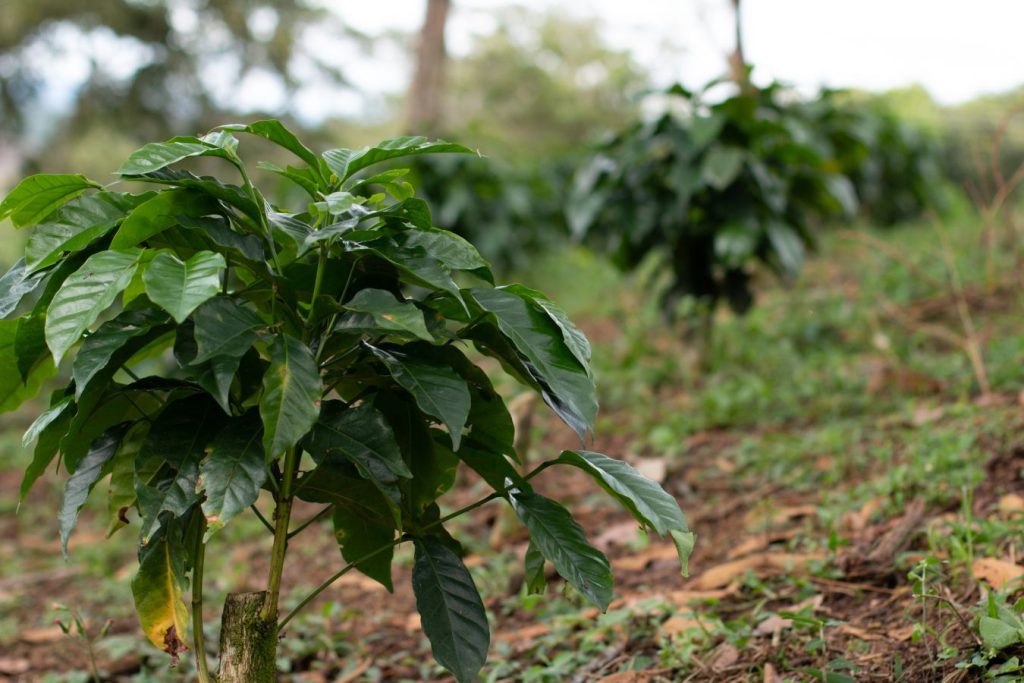There are also significant changes between the leaves of different varieties of plants, as well as the cup properties of these varieties’ seeds when collected and brewed. Varied varietals have different flavor attributes, as well as different mouthfeels. It’s crucial to note that for the majority of coffee growers, the flavor isn’t the primary reason they chose a certain variety to cultivate.
For individuals who rely on growing coffee for a living, the tree’s output and disease resistance are usually quite important. That is not to claim that all producers choose their kinds in this manner, but it is important to consider the impact of these decisions on the producer’s profitability and income.
From Seed To Coffee Tree
Most well-established coffee plantations contain a nursery where seedlings are raised before being planted on the farm for production. The coffee beans are initially planted in fertile soil, where they will germinate quickly. The developing stalk then lifts the bean out of the ground, and they are referred to as soldiers at this time.
They resemble a roasted coffee bean linked to the top of a thin green stem in appearance. The bean bursts open soon after, revealing the first leaves. Coffee plants develop quickly and can be transplanted from the nursery into production after 6–12 months.
Coffee cultivation necessitates not just monetary but also time commitments. In most cases, a coffee grower must wait three years for a newly planted tree to bear fruit. Making the decision to start growing coffee is a big one, which means it will be tough to persuade a producer to return to the crop in the future if he abandons it.
DISEASES AND PESTS
A multitude of pests and diseases can affect the coffee tree. Coffee leaf rust and the coffee berry borer are two of the most frequent.
RUST ON COFFEE LEAF
This fungus (Hemileia vastatrix) creates orange lesions on the leaves and is known as Roya in many regions. It obstructs photosynthesis, causing the leaves to fall off and finally kill the tree. It was first observed in East Africa in 1861, but it wasn’t studied until it started affecting plants in Sri Lanka in 1869 when it nearly decimated the country’s coffee plantations during the next ten years. It arrived in Brazil in 1970, possibly via a shipment of cocoa seeds from Africa, and swiftly spread throughout Central America.
It has now spread to every coffee-producing country on the planet, and rising temperatures due to climate change are compounding the problem. Several Central American governments declared a state of emergency in 2013 owing to rust damage.
Coffee tree and coffee tree
Coffee is derived from a plant. Coffee plants are woody evergreens that can reach a height of up to ten meters in the wild. The Bean Belt, which spans the equator between the Tropics of Capricorn and Cancer, produces the majority of the world’s coffee. Parts of Central and South America, Africa, the Middle East, and Asia make up this region.
These plants produce coffee beans in the form of a “cherry.” The word “coffee bean” is actually deceptive; the beans we roast to make coffee are actually seeds. Each cherry-like fruit of the coffee plant contains typically two of these seeds. Coffee growers select these cherries at just the perfect ripeness stage to ensure they have the most delectable flavor.
Depending on how long it takes for a coffee to reach peak taste quality, each type has its unique maturity and harvesting process. Following the harvesting of the coffee cherries, the beans are removed from the fruit and roasted. At this point, the coffee turns into the dark brown bean we are all familiar with.
Blossom And Fruit
The majority of coffee trees only yield one primary harvest per year, while certain countries have a second crop that is usually smaller and of poorer quality. Rainfall over a lengthy period initiates the cycle. This encourages the trees to bloom, producing many white blooming blooms with a distinct jasmine-like aroma.
The blooms are pollinated by insects such as bees, but Arabica coffee can self-pollinate, which means that unless the blossoms are knocked off the tree by bad weather, they will always produce fruit.
The fruits might take up to nine months to mature and be harvested.
Coffee cherries, however, do not ripen evenly. The coffee grower must choose between harvesting all of the fruits from each tree at the same time, resulting in a certain amount of unripe or overripe coffee cherries in the harvest, or paying pickers to make multiple passes of the same trees, ensuring that each cherry is harvested at the perfect ripeness.

